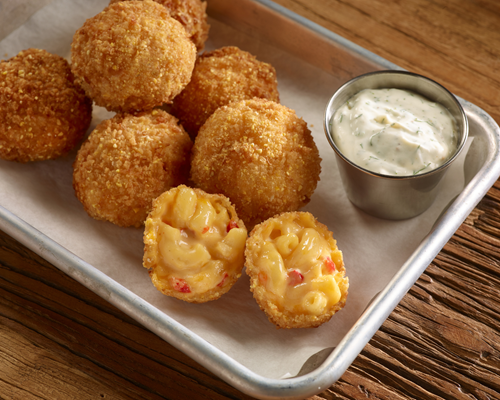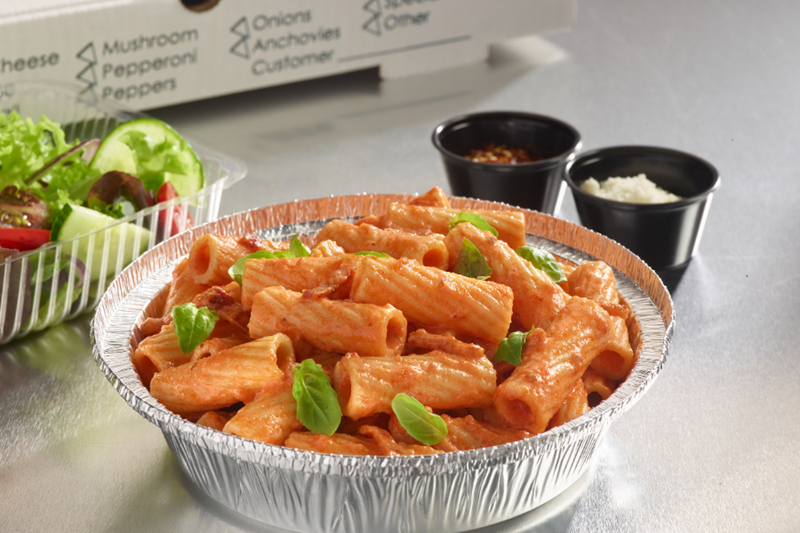 Is your pizzeria shouting or whispering? Because the noise a restaurant makes influences a customer’s dining experience, operators need to listen.
Is your pizzeria shouting or whispering? Because the noise a restaurant makes influences a customer’s dining experience, operators need to listen.
“Acceptable noise levels in a restaurant or bar will depend on the type of establishment, its concept and general positioning. Noise control is actually quite rare in restaurants, as to some extent, the greater the noise the more exciting the venue. Indeed, a high level of background noise can be self-aggravating — it makes people speak louder to be heard,” says restaurant consultant Robert Ancill, CEO and managing partner of thenextidea.net. “Of course, this is not the case of all establishments, as noisy spaces can often be off-putting and nonrelaxing.”
Phil Diegelman, president of The Diegelman Group, a restaurant consulting fi rm in Orange, California, reminds operators to “remember the “social part of dining out; more importantly, that a loud restaurant is a busy restaurant.”
When it comes to measuring the noise level in a restaurant, find the range in decibels. “There is no set acceptable noise level; rather there are typical ranges depending upon the atmosphere desired within the space. Higher noise levels from speech and music are used at trendy spaces to lend an enjoyable dynamic environment, whereas in more intimate restaurants, lower noise levels set by mellow music are more desirable. Lively restaurants can have sound levels in the range of 75 dB(A), often with music having a strong base beat; intimate fi ne dinning establishments can be in the range of 50 dB(A),” says Brian Howe with Howe Gastmeier Chapnik Limited in Canada.
According to Diegelman, “the acceptable noise level for most restaurants is usually at conversation level, 70dB, or at its loudest 80dB (a telephone ring), all at a distance of three to five feet. In restaurants that have a bar, the noise level can be much higher because of the recorded or live music (90 dB or higher), which is the beginning of the danger level to our hearing.”
Dominique J. Cheenne of C&C Consultants Acoustic and Noise Control in Nebraska says: “A pizza restaurant that wants to focus on a quiet-style motif, with lights on the table and a visible cooking area such as wood-fired oven, should aim at less than 70 dB(A) of ambient noise level, and this would mean very quiet background music (if any) in order for the patrons to have private conversation without raising their voices. On the other hand, a more relaxed restaurant catering to college students will opt for an ambient noise level that is noticeably higher [between 75 dB(A) and maybe as high as 80 dB(A)], because they value background music and even televisions as part of the experience.”
According to Brian Smith, INCE board-certified principal of Acoustical Engineering Consultants in Elk Grove, California, “most restaurant spaces should try to keep average sound levels below 75 dB(A). Many of today’s restaurant spaces easily exceed this level. One other thing to keep in mind. If you have restaurant sound levels consistently above 85 dB(A), an OSHA hearing conversation program may be necessary for staff.”
To compare levels, Diegelman says operators can listen to the phone ring — and if it can be heard, the level is perfect. “To become more technical, the operator can purchase a sound level meter online,” Diegelman advises.
According to Cheenne, “accurate measurements of noise levels must be done with sound level meters (SLM) that can provide a statistical description of the levels over time.”
Ancill suggests a non-technical way operators can measure noise levels. “A more typical measurement is controlled customer feedback in the form of surveys, mystery shopper reports, even sales performance at different day parts when noise is noticeably different,” Ancill said.
If a restaurant is determined too loud, operators can adjust the volume in a variety of ways. “The easiest thing to do is look at the customer area. Are the surfaces hard? Glass, wood, drywall and exposed brick are prime reflectors of sound. The more sound there is bouncing around the room, the lower the intelligibility of conversation. Soft surfaces — such as carpet, tapestries, curtains, partitions and padded seating — all help with reverb control. In ceilings you can have higher rated ceiling tiles for sound absorption. Treatments to walls and ceilings can range from foam products to fabric covered panels or diffusers. Most after-market solutions are higher in cost and installation,” says David Soran of Audio Consultant Services Inc. in Denver, Colorado. Smith agrees that specific surfaces can raise the volume.

“The typical problem of noise levels or loudness in restaurant spaces comes from the use of hard sound reflecting room finishes. Other factors may include the space layout, booth/table design, partitions, HVAC system, sound system and kitchen equipment. Here is where the expertise of an acoustical consultant really helps. Even if the only necessary change is adding sound absorbing material to room surfaces, an acoustical expert will determine the quantity, type, placement, and mounting method of sound absorbing materials to meet both the sound level and aesthetic goals of the owner/operator,” Smith says. “In general, carpet is not a good sound absorber. Acoustical treatment is usually recommended for both the ceiling and wall surfaces, with the ceiling typically being the most important acoustical surface in the space.”
If customers’ voices are too loud because of music, Diegelman recommends turning “the volume down incrementally, waiting a few minutes between adjustments. This will quiet them without notice. Most guests will notice the noise level has dropped and speak more quietly, as to not be heard by the table next to them.”
Operators must also be aware of minimizing the sound from machines. “Restaurants need to minimize the impact of sound from exhaust fans and other mechanical systems. A good engineering design would limit noise levels from these sources to about 40 dB(A) so as not to interfere with music and speech,” Howe said. Noise levels in restaurants can tell a lot to a potential customer like “here’s the party” or “let’s talk.” Depending on what you want your restaurant to say, operators need to adjust the volume. ?
DeAnn Owens is a freelance journalist living in Dayton, Ohio. She specializes in features and human interest stories.



